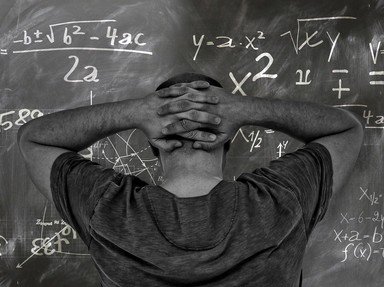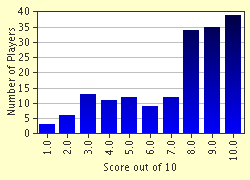Quiz Answer Key and Fun Facts
1. This famous mathematical constant appears everywhere, from biology to astronomy. The origin of its name is somewhat mysterious; many claim that it got its name from the first letter of the last name of Leonhard, who first proved that the constant was irrational. What is this number, the base of the natural logarithm (ln)?
2. Amedeo was an Italian chemist with a famous hypothesis and a famous number. He didn't actually determine the constant that's named after him, but he did predict it when he hypothesized that equal volumes of gas, under the same conditions of temperature and pressure, contain equal numbers of molecules. What constant, the number of atoms in a mole, is named after him?
3. Michael, an English scientist of humble birth, made almost innumerable contributions to the science of electrodynamics: he invented electric motors, discovered electromagnetic induction, and basically paved the way for commercial electricity. The constant that carries his name is equal to the electrical charge of one mole of electrons. What is it?
4. Our next constant is named after two people, but it's the first who concerns us now. Jozef was the Slovenian son of a maidservant and a miller's assistant who made contributions to electrodynamics and thermodynamics, but his name is attached to a law of blackbody radiation: the energy emitted is directly proportional to the fourth power of the body's temperature. What is the name of the proportionality constant, represented by a lower-case sigma?
5. Ludwig was an Austrian scientist, so famous that Emperor Franz Josef himself made him promise not to accept an academic appointment anywhere else. He made important contributions to the theory of statistical mechanics, including the definition of entropy S: S = k ln W, where W is the number of states available to the system and k is what constant named for its formulator?
6. Max was advised against pursuing physics: "In this field, almost everything is already discovered," a professor told him in 1874. Max proved him wrong with his theory of blackbody radiation in 1900. According to this theory, electromagnetic energy could only be emitted in quantized form. The energy of a photon is then equal to its frequency times what constant, named for Max?
7. Janne, working at Lund University in Sweden, noticed an interesting pattern in the emission lines of the hydrogen spectrum. While many were trying to explain and predict the lines, it was Janne who in 1888 devised a simple formula: the inverse of the wavelength of each emission line is equal to a constant times (1/ni^2 - 1/nf^2), where ni < nf are integers. What is this constant, which is different for each element, called?
8. Niels was one of the fathers of quantum mechanics, although his model of the atom was more classical than not. In this theory, released in 1913, electrons traveled about the nucleus in distinct orbits which affected the atom's chemical properties. The radius of the innermost electron orbit is named after him; what is it?
9. The next constant is not technically constant after all: it varies over very large time scales. This is, perhaps, to be expected of the number that describes the expansion of the universe! American astronomer Edwin realized that the speed of receding galaxies, as measured from their redshift, is directly related to their distance from us. What is the constant of proportionality, named after him?
10. Subrahmanyan was one of the first to combine physics and astronomy. While traveling by ship from India to continue his education at Cambridge, he worked out a startling theory: stars above a certain mass cannot end their existence as white dwarf stars, but instead must continue collapsing, in modern terminology becoming either neutron stars or black holes. What is this mass limit, which won him the 1983 Nobel Prize in Physics and which is equal to 1.44 solar masses?
Source: Author
CellarDoor
This quiz was reviewed by FunTrivia editor
gtho4 before going online.
Any errors found in FunTrivia content are routinely corrected through our feedback system.

